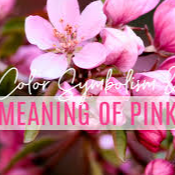Has Pink always been a girly color?
12.9K
3

About
Watch and Learn
Saudi Arabia
Description
On the off chance that you see infants at a clinic in the U.S., you'll undoubtedly see them in pink or blue outfits to stamp their Gender (regularly conflated with sex character). Has the U.S. continuously utilized tones to connote young men or young ladies? The short answer is no. Pastel tones for child clothing—including blue and pink—were presented during the nineteenth century, and they didn't become sex-explicit tones until the twentieth century. A few unique angles influenced a definitive assignment of pink for young ladies. Back before pastels were famous for children, most guardians dressed their children in white dresses until they were around six. Student of history Jo B. Paoletti says this outfit was reasonable: white cotton could be handily blanched, and dresses permitted advantageous access for diaper evolving. Then, at that point, pastel tones turned into a prevailing fashion for infants. These pastels weren't showcased to a specific sex: both young men and young ladies were wearing a wide cluster of pastels, including blue and pink. Toward the start of the twentieth century, a few stores started proposing "sex-suitable" colors. In 1918 the exchange distribution Earnshaw's Infants' Department guaranteed the "for the most part acknowledged principle is pink for the young men, and blue for the young ladies. The explanation is that pink, being a more chosen and more grounded shading, is more reasonable for the kid, while blue, which is more fragile and humble, is prettier for the young lady." Additionally, a 1927 issue of Time noticed that huge scope retail chains in Boston, Chicago, and New York proposed pink for young men. This pattern of pink for young men was not as overpowering as our present shading sex assignment, notwithstanding. The children of post war America during the 1940s were quick to be wearing the sex-explicit attire that Americans know about today. Young men and young ladies were dressed like scaled down people rather than consistently in kids' dresses. Pink turned into the young ladies' tone, blue the young men'. This pattern in kids' clothing took a plunge during the 1960s and 1970s inferable from the ladies' freedom development. Individuals who participated in this development felt that dressing young ladies in ladylike or characteristically "silly" attire would restrict the young ladies' chances for progress, and many guardians started preferring impartial tones and forms. By the 1980s, be that as it may, sexual orientation arranged children clothing had returned into design firmly. Paoletti focuses to the creation of pre-birth testing as the reason for this trend, since guardians had the option to learn (and thusly underscore) the sex of their child before the child's introduction to the world. Likewise, garments washing innovation started to permit cleaning and fading of brilliant garments without harm to the garments' tints.About
Watch and Learn
Saudi Arabia
